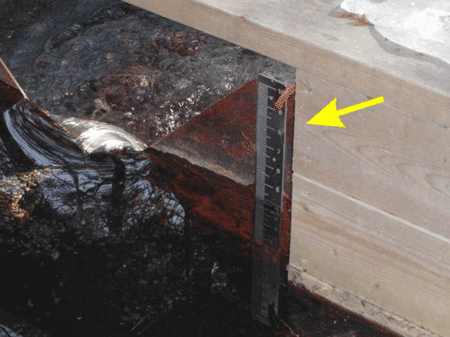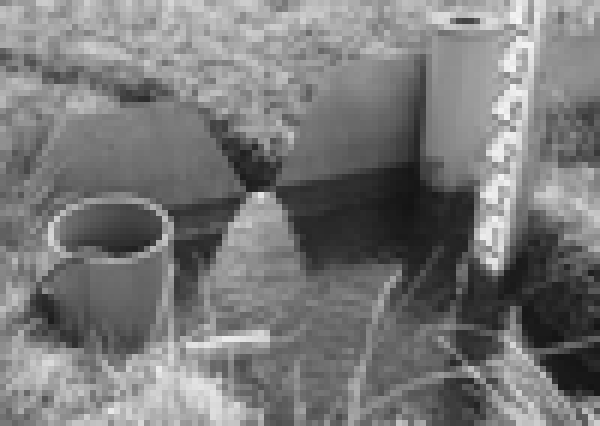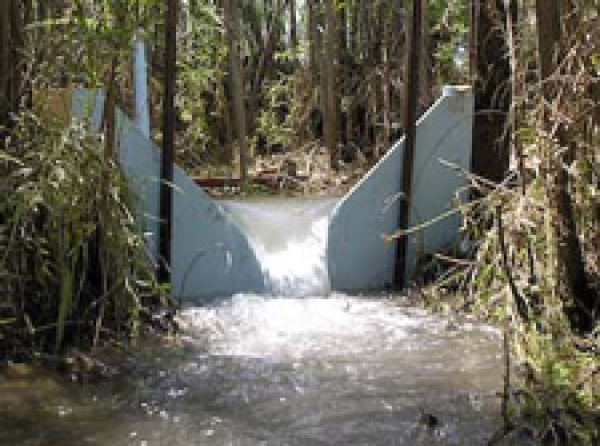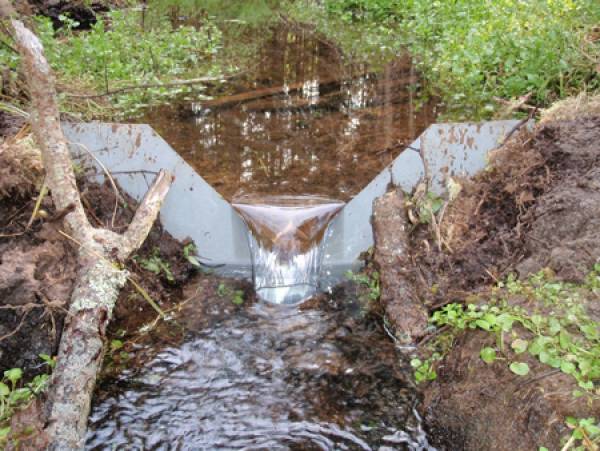This website uses a variety of cookies, which you consent to if you continue to use this site. You can read our Privacy Policy for
details about how these cookies are used, and to grant or withdraw your consent for certain types of cookies.
The Problem with Weir Mounted Staff Gauges
On the face of it, mounting a staff gauge on a weir plate to get the head / flow rate seems like a good idea. It works for on a flume, why wouldn’t it work on a weir?
The problem is, as we have seen earlier, the water level in a weir pool draws down as the flow approach the weir crest. This drawdown occurs not only down the length of the weir pool but also across the width of the weir pool.

As a result. a staff gauge mounted on the face of the weir is always going to see a lower water level than is actually occurring at the point of measurement upstream of the weir crest and outside of its drawdown effects.

While a weir mounted staff gauge will provide a general indication or the rise or fall of the water level, but it will in no way be accurate. Keep in mind, also, that there has been no published research on how to (or if it is possible to) correlate the weir face level reading to the actual flow head at the upstream point of measurement.
Related Blog Posts
Explore more insights in our blog.

LOCATIONS IN ATLANTA, GA & BOISE, ID




